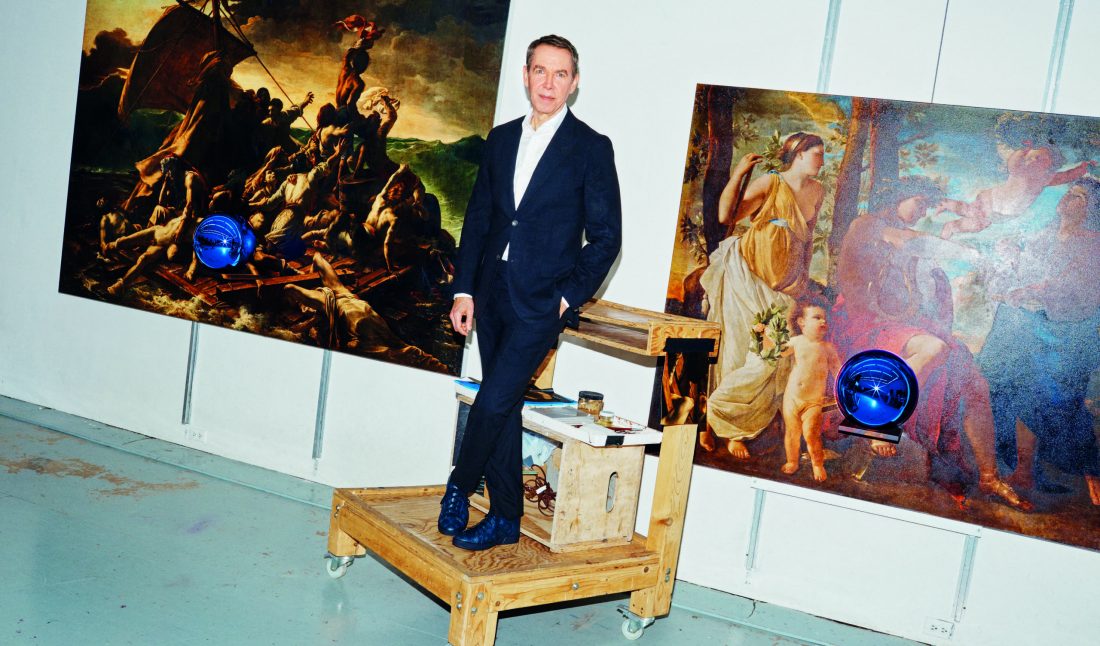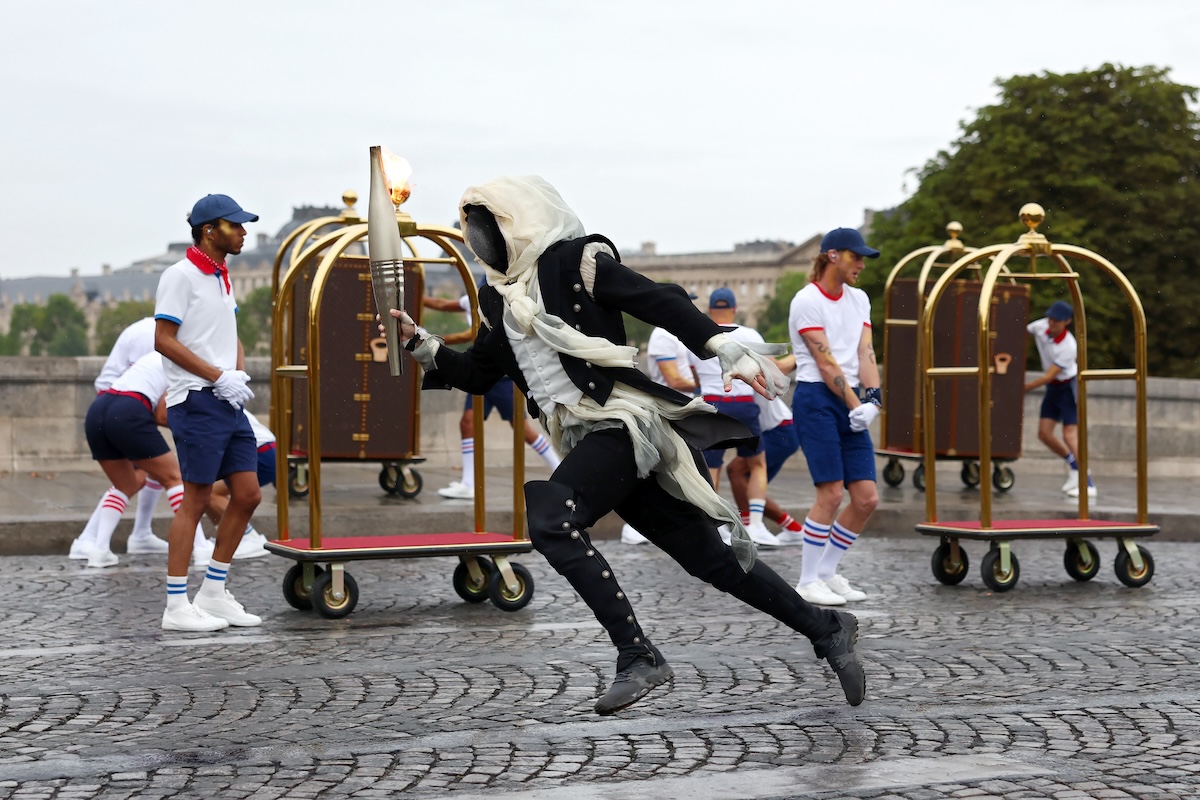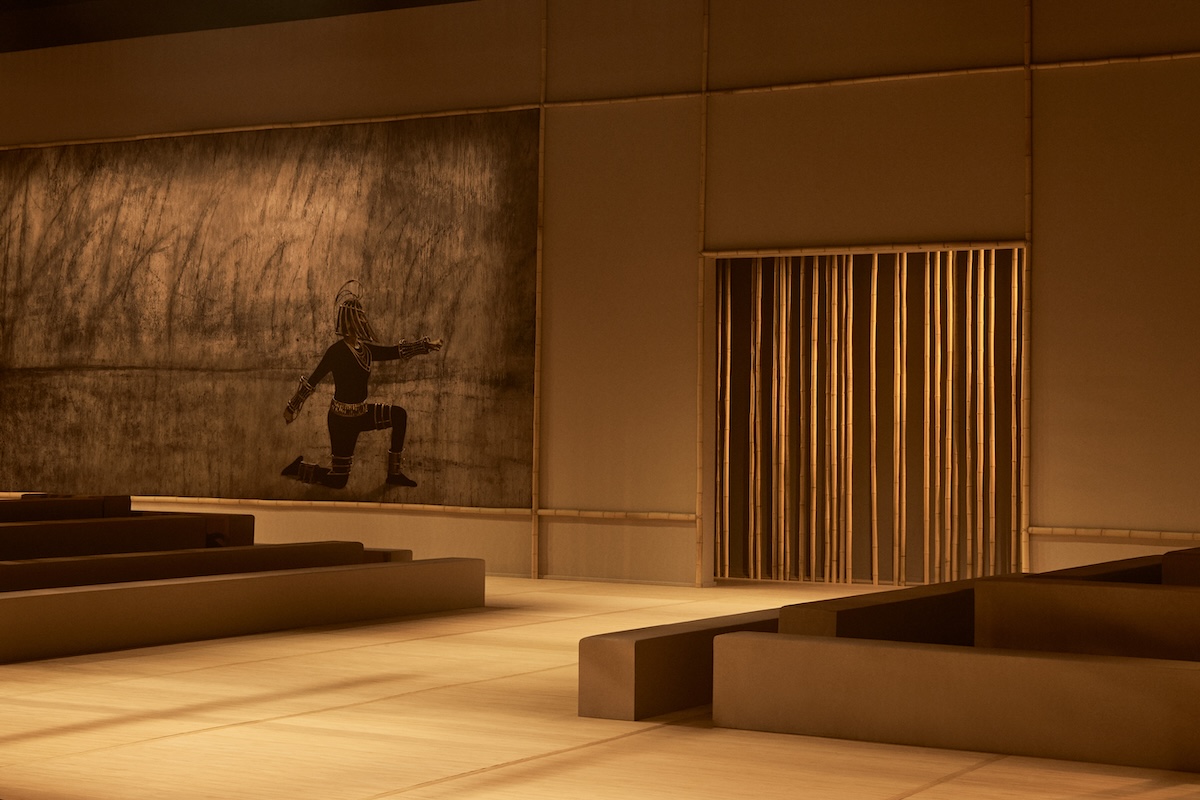Jeff Koons believes in the power of art to change not only our minds and hearts, but our genes. He sees the viewing and making of art as an opportunity for transcendence. To get there, artists need to communicate and connect, not just with the viewer, but with the artists who came before them, those who were able to create something outside of themselves.
Koons has long thought that art should exist without barriers—of educational pedigree, art history knowledge, or financial or institutional access. It’s why his public work is arguably his strongest. Like Seated Ballerina, which was on view from May 12 to June 9 at Rockefeller Center, to raise awareness with the International Centre for Missing and Exploited Children for National Missing Children’s Month. That was the artist’s third time presenting a public work at Rockefeller Center alone, following Split-Rocker in 2014 and Puppy in 2000.
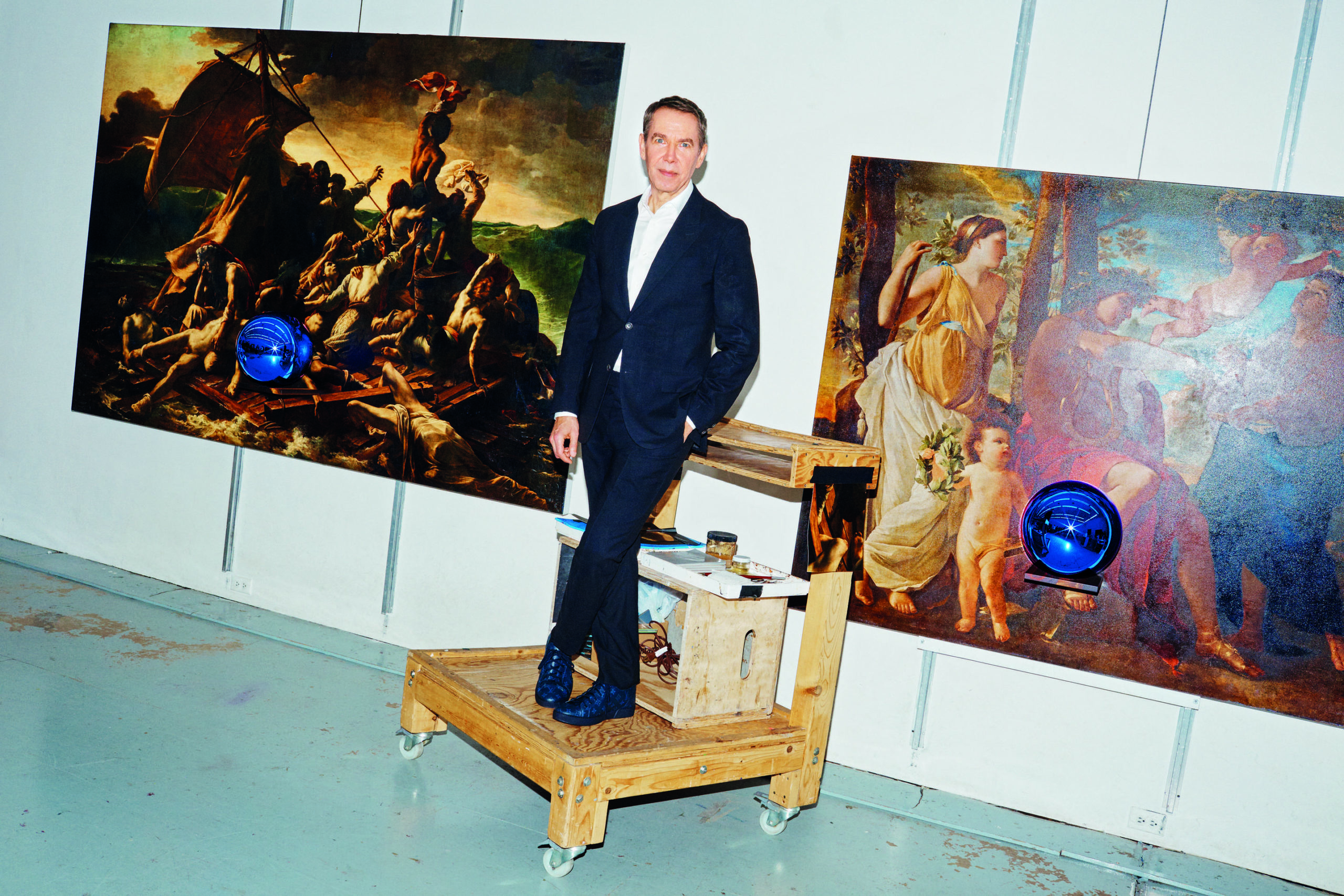 Louis Vuitton / MACIEK KOBIELSKI
Louis Vuitton / MACIEK KOBIELSKI
Whitewall met with the artist in his sprawling Chelsea studio just days after his “Masters” collection launched for Louis Vuitton, a project he saw as quite public and accessible, too. The special line puts the work of Da Vinci, Titian, Rubens, Fragonard, and Van Gogh on accessories like bags and scarves, touting the name of each master in bold reflective metal type. So while perhaps the Louis Vuitton bags aren’t accessible in cost per se (albeit much more than an original Koons work), they will be seen on the street.
We chatted with Koons about his experience working with LVMH for the second time and about the connection between our cultural life and our biological makeup.
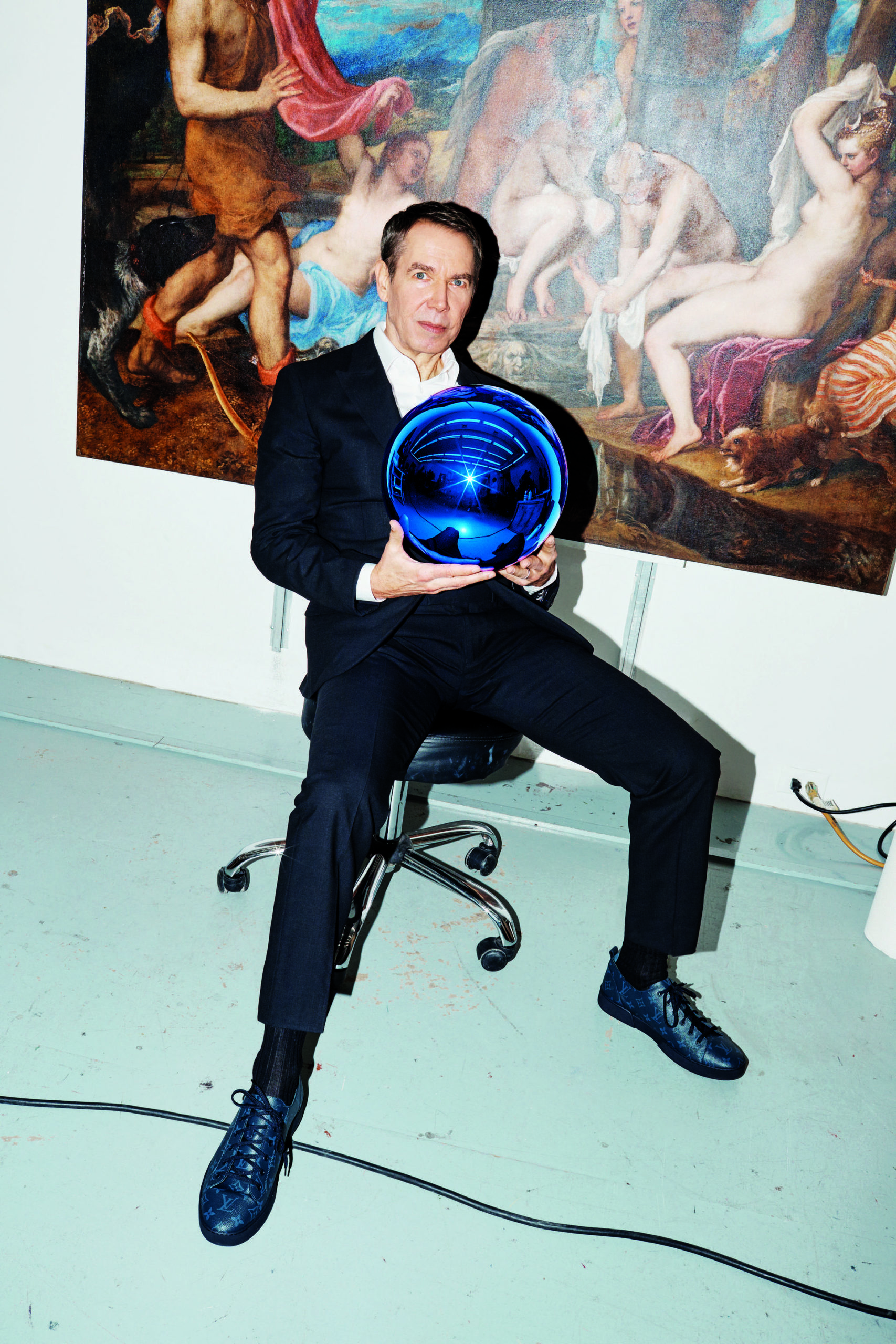 Louis Vuitton / MACIEK KOBIELSKI
Louis Vuitton / MACIEK KOBIELSKI
WHITEWALL: After working with LVMH on the Balloon Venus sculpture for Dom Pérignon, you were approached to work on a project with Louis Vuitton. You said in a recent interview that at first you thought they might ask you to do a watch, but when they suggested bags, you thought it could be wonderful. What did you like about the idea initially?
JEFF KOONS: I’ve known the Arnault family for quite some time, and they’d been involved in my work over the years. Eight years ago they approached me to work with Dom Pérignon. With their team, I was really impressed at how fast we were able to develop my prototype. If I would question a material, immediately they would be able to come back and have a really finished product and a color to match my original color. Their facilities were very impressive. It was really a joy to work with them. What’s important when you’re working with people is that they have a vision and can bring it to completion. The group under LVMH is able to do that.
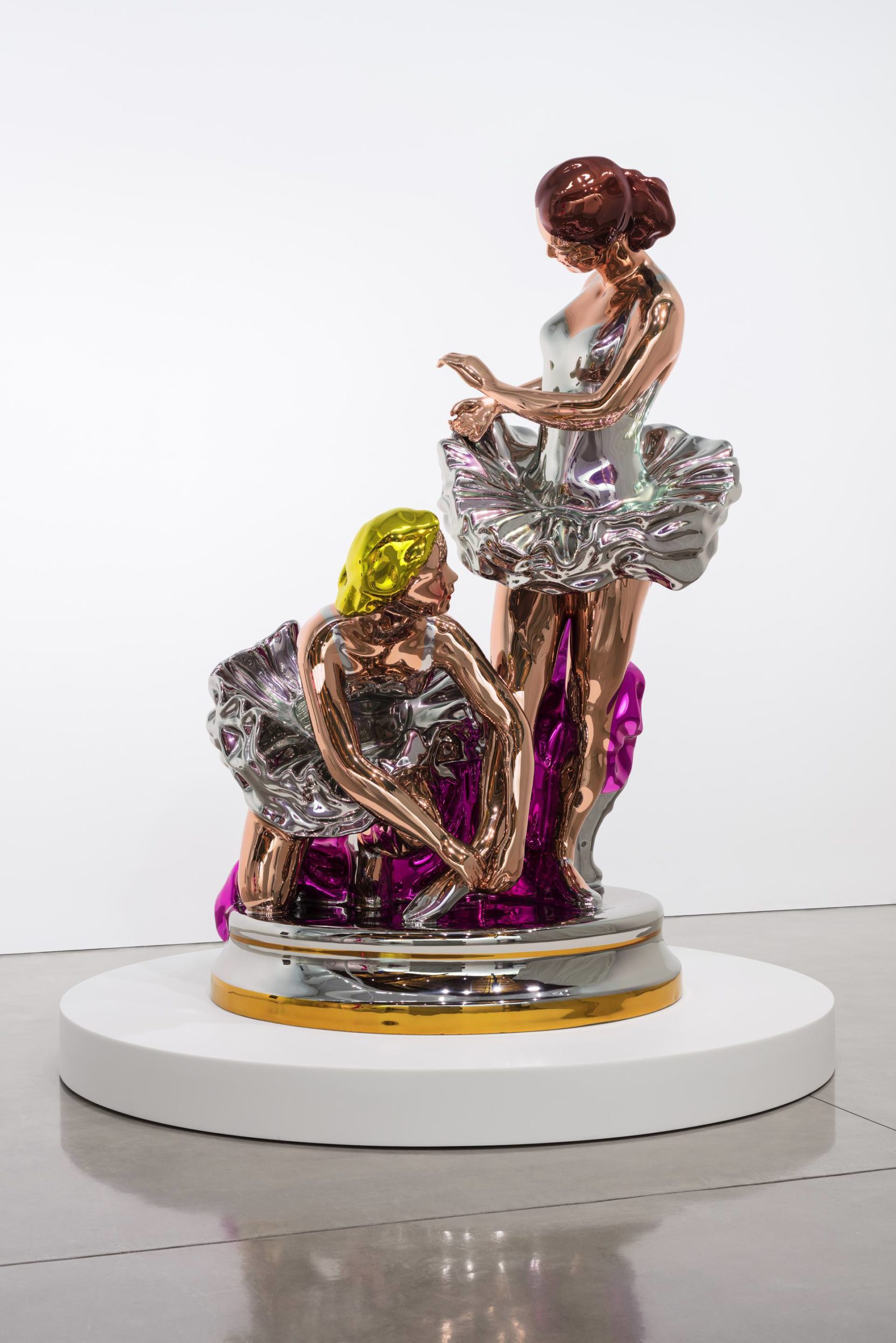 Jeff Koons Ballerinas
Jeff Koons Ballerinas2010–14
Mirror–polished stainless steel with transparent color coating
100 x 70 x 62 inches
© Jeff Koons. Photo by Frednik Nilsen
Courtesy of Gagosian
After that project I received a call a little over two years ago from Delphine saying she had an idea for a project. She asked, “How would you like to make a special collection of Louis Vuitton bags?” If I would do it, I would really want to concentrate and give it the intention that it deserves. As soon as I got off the phone, I realized it was a fantastic opportunity to create art and that would have a profoundness about it that could be communicated to people.
Within two weeks we began the process by looking at the history of Louis Vuitton, what they’ve created in the past, the materials they’re working with today, the different options in colors, the types of stitching, the canvases. And then from that I immediately let my ideas develop.
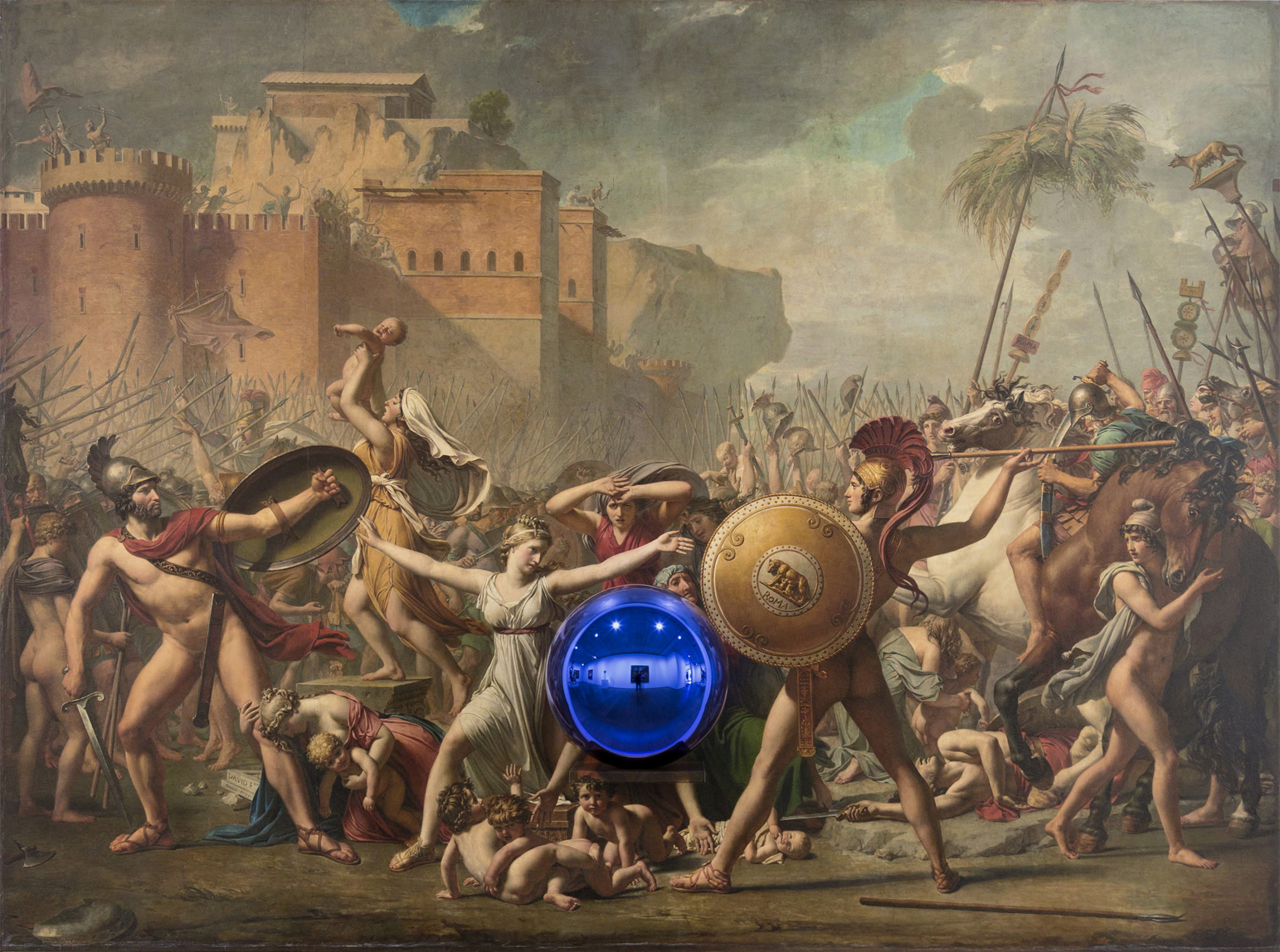 Jeff Koons
Jeff KoonsGazing Ball (David Intervention of the Sabine Women)
2016
Oil on canvas, glass, and aluminum
65 x 88 1/4 x 14 3/4 inches
© Jeff Koons
Courtesy of Gagosian
WW: Was it clear then that your “Gazing Ball” series would be the best fit for this?
JK: The way I work is very intuitive. I was pulled to make something that would deal with connectivity, so that when somebody was carrying the bag it would be a symbol of connectivity and of humanism. In a way, it’s a sense of responsibility to try to carry those values of humanism and try to reach one’s potential so that you can inform and educate others and really be of service to your community. I think the bags communicate that.
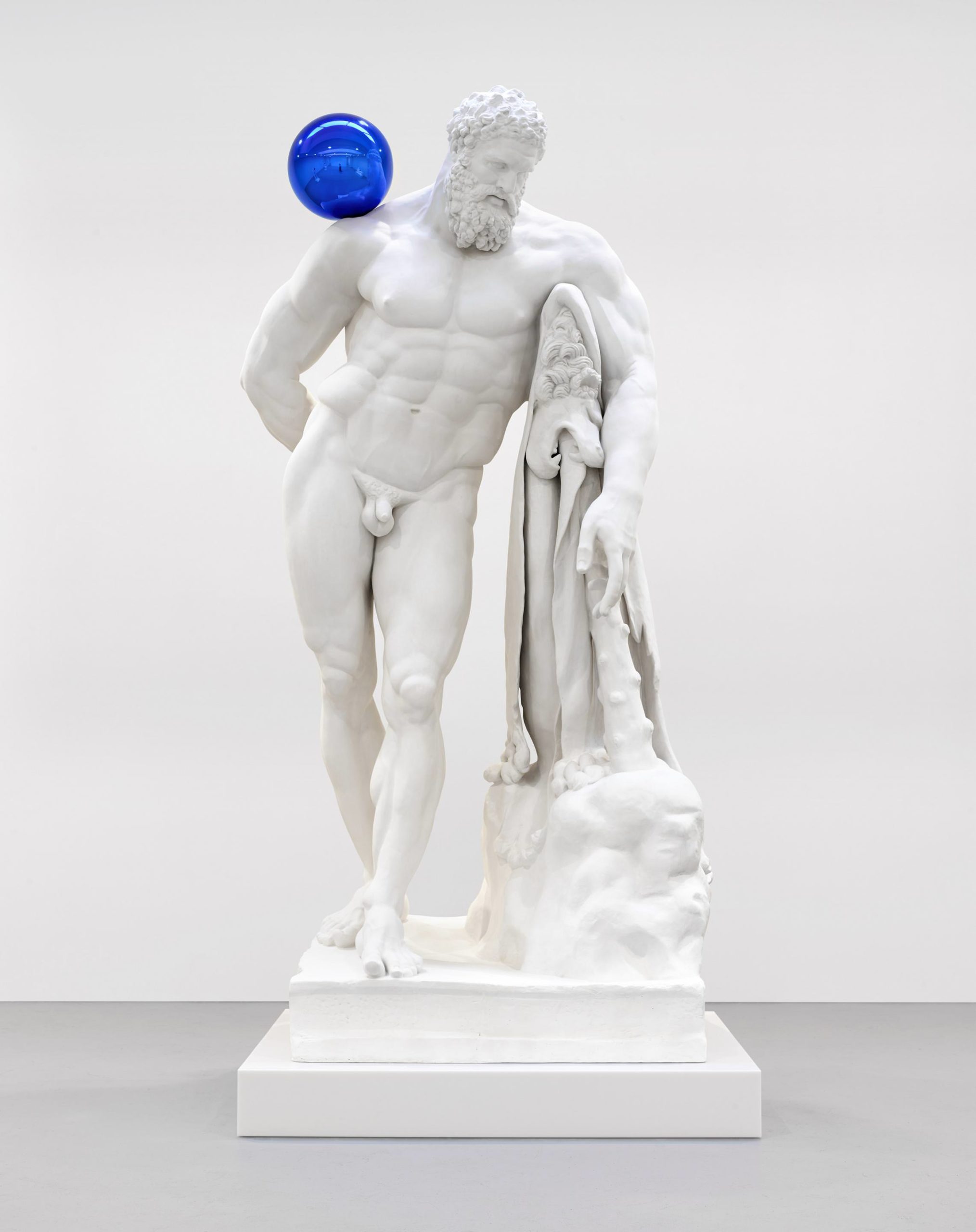 Jeff Koons
Jeff KoonsGazing Ball (Farnese Hercules)
2013
Plaster and glass
128 1/2 x 67 x 48 5/8 inches
© Jeff Koons
Courtesy of Gagosian
WW: How did you choose the five works—Leonardo da Vinci’s Mona Lisa [1503–1506], Titian’s Mars, Venus, and Cupid [ca. 1546], Peter Paul Rubens’s The Tiger Hunt [1615–1616], Fragonard’s Girl with Dog [1770], and Vincent Van Gogh’s A Wheatfield with Cypresses [1889]?
JK: I’m a fine arts artist. If I were be a poet, the bags could have poetry written on them, or they could be images of poets. It just happens that the bags are this way because I’m a fine arts artist.
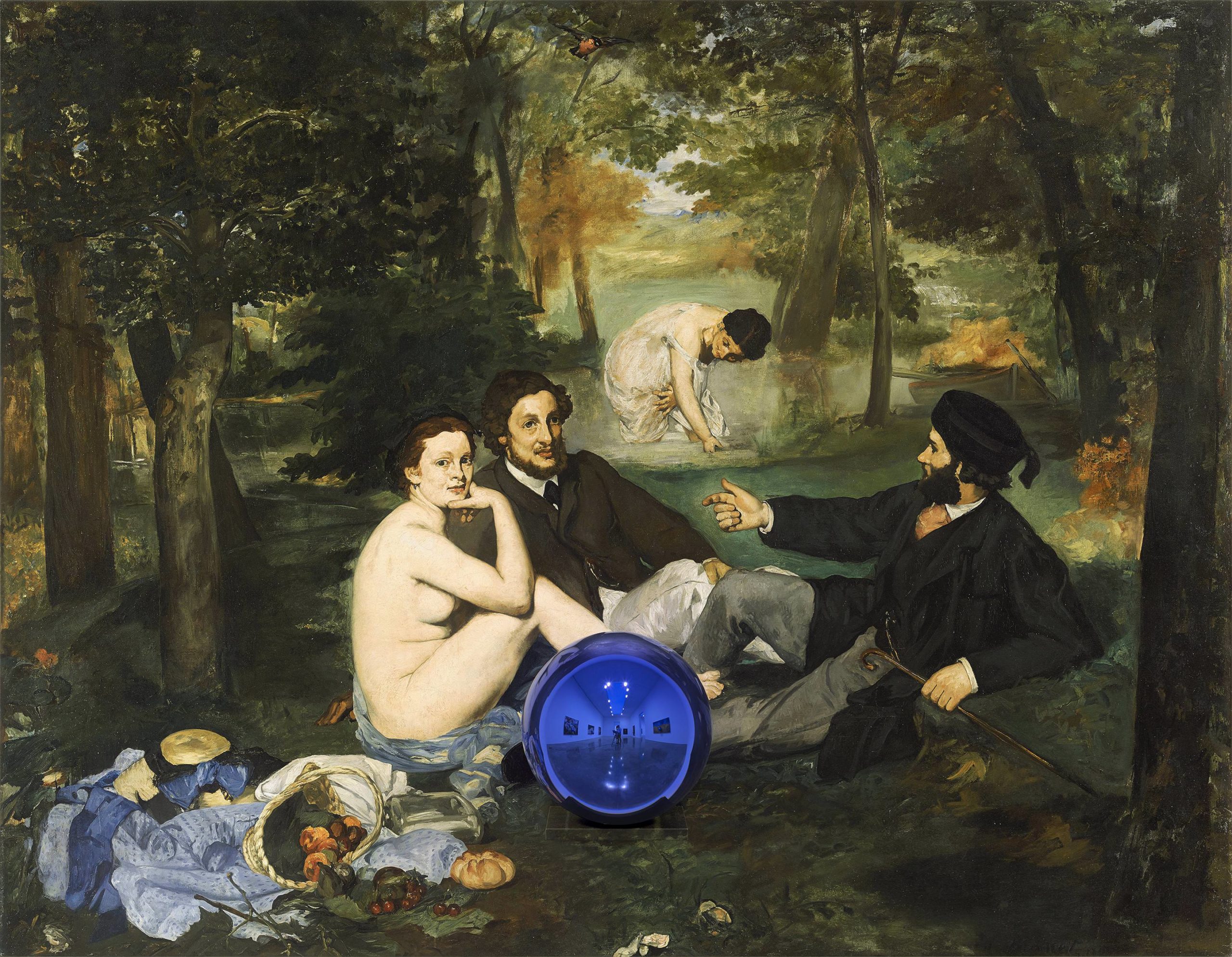 Jeff Koons
Jeff KoonsGazing Ball (Manet Luncheon on the Grass)
2014–15
Oil on canvas, glass, and aluminum
63 x 81 1/4 x 14 3/4 inches
© Jeff Koons
Courtesy of Gagosian
The information that’s being communicated is about love; it’s about giving it up to something greater than the self. The way we’re able as individuals to experience transcendence, to experience becoming, is to have interest outside the self. All of the artists that are in this “Masters” collection reached a certain level of transcendence because they’d given it up to other people. If you look at Rubens’s Tiger Hunt, Rubens is giving it up to Leonardo. Inside the Palazzo Vecchio, there is a wall and underneath the wall they believe that’s where Leonardo’s painting of The Battle of Anghiari could be located. We know the work through a drawing that Raphael made of it, and there’s a print of that drawing by Rambaldi. Rubens’s Tiger Hunt has the same configuration of The Battle of Anghiari. So he’s giving it up to Leonardo. And Leonardo is giving it up to Uccello; Uccello did The Battle of San Romano.
So this is what the collection is about. It’s about connections. It’s about how our biology, our inner biological life—our genes, our DNA—is interconnected. Our exterior cultural life is running in parallel to us. And our cultural life changes who we are. I’m a different person since I came across Manet’s work. My genes morphed. And we do; our genes morph to our cultural life. I think when somebody comes down the street and they have one of the bags from the collection, what’s being celebrated is the humanism, the becoming, and how, hopefully, we can make the world a better place for future generations.
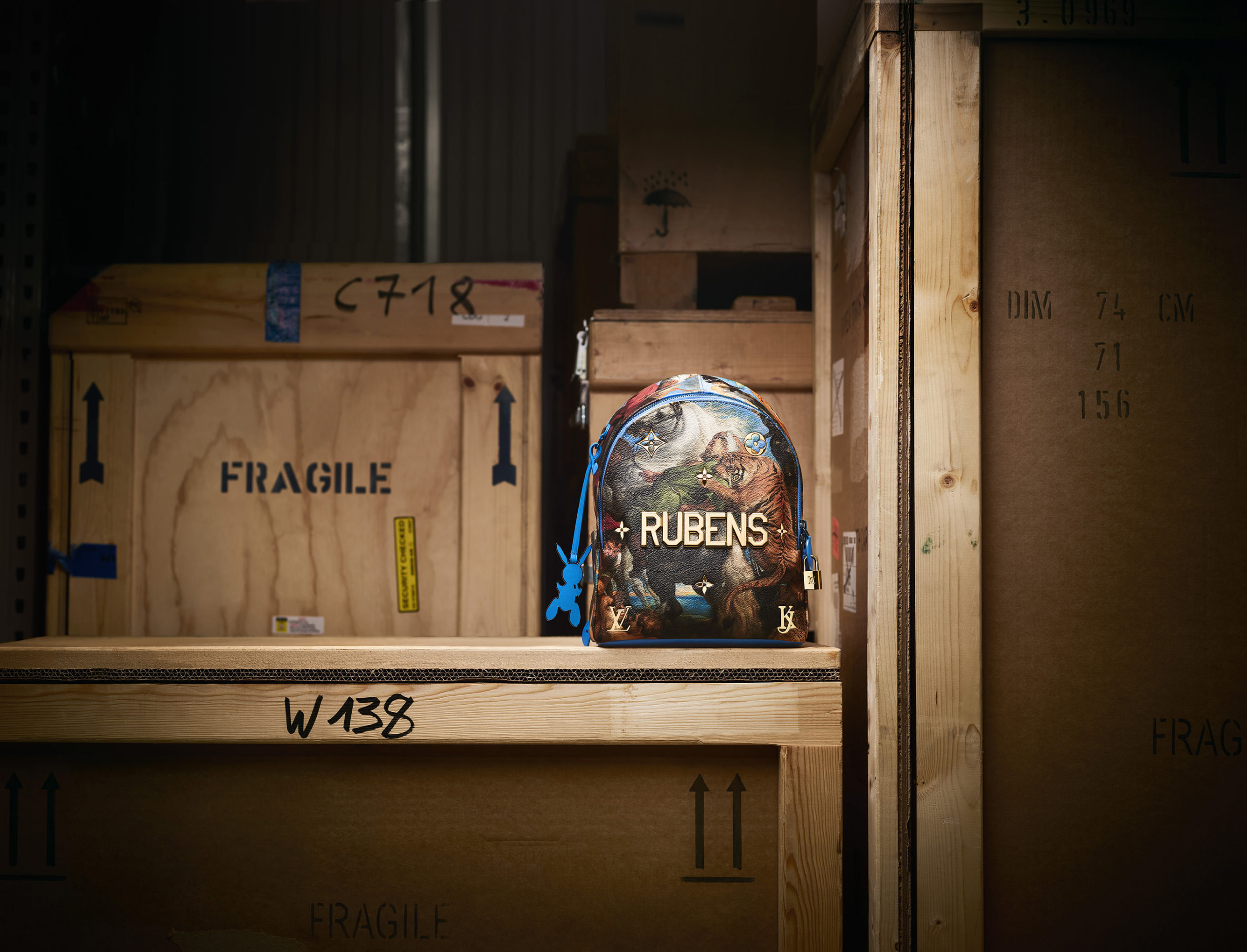 Courtesy of Louis Vuitton
Courtesy of Louis Vuitton
WW: Have you seen the bag out in the street, in public?
JK: I have. I love it. I’m excited. I’m thrilled to see it. I love all the discourse and discussion around the bag. And the bags do celebrate accessibility.
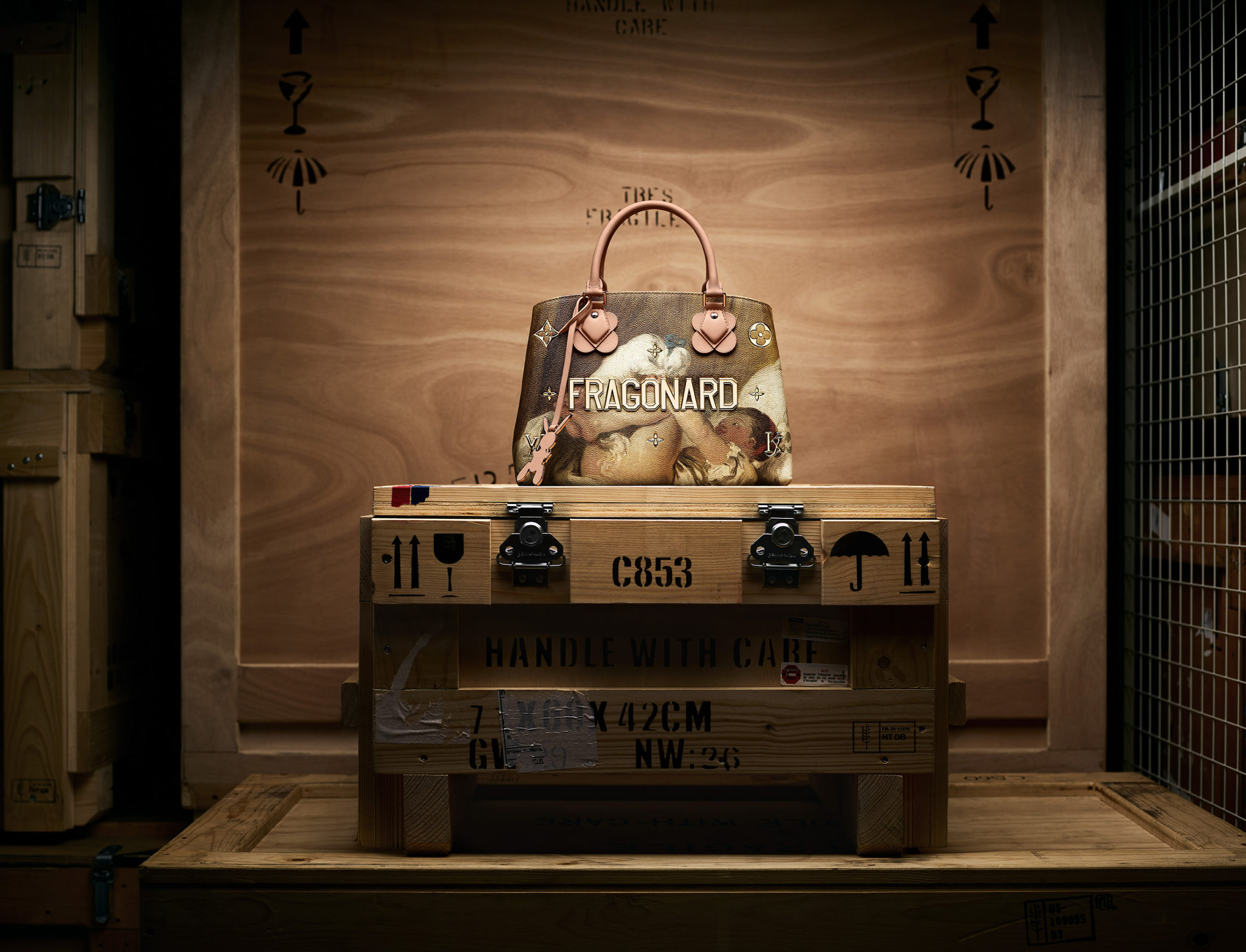 Courtesy of Louis Vuitton
Courtesy of Louis Vuitton
I remember when I started to realize the power of art. There was a time when I felt that with art, you had to know something beforehand. Then I realized that you don’t need to know anything. As soon as you feel that there are certain requirements you need to have before looking at art, you’re disempowered. But really, you never need anything. The only thing you need is yourself. And where the art happens is inside you. When you come across art, it’s the realization of your own potential, or an essence of your own potential. That’s art. The object is just some type of transponder, something that excites or stimulates. But it’s not where you find art.
It’s about you; it’s about your interests, your curiosities. There’s nothing needed.
WW: Instead of a gazing ball reflecting the masterworks, as your series does, these bags have the names of the artists in reflective type. How did you arrive at that?
JK: My “Gazing Ball” paintings deal with this kind of connectivity we’ve been speaking about. For the collection, in place of the ball I put the name of the artist. The ball functions as something that affirms the viewer, and at the same time it’s connecting the work by reflecting the work. It’s dealing with both biological life and entering the eternal through the realm of ideas.
In this case, the reflectivity of the name has a very now, street quality. It’s a symbol of somebody that has made achievement, but it’s a symbol of somebody that has done it really through love, and assumed a certain responsibility to disseminate that information.
The whole bag is a celebration of materialism. I mean that in the absolute finest sense of understanding material and what its properties are—what you can do with it, how you can color it, how durable it will be, how you can stitch it, what type of processes you could do to create texture. To ultimately create poetry with the materialism. I think that’s what Louis Vuitton does. That’s what I do. We have these opportunities constantly to be able to communicate to people that we care about them. I think Louis Vuitton’s involvement in working with materials, my involvement in working with materials—we both are always trying to communicate in the same way.
Taking care of the details is not about the details. It’s about showing respect to the viewer. It’s the basis of communication.
WW: Do you consider the “Masters” collection a work of art?
JK: I think it’s art. I think there is a profoundness to it. I think there are ideas there. I think that its relevance is being communicated through ideas and not through distribution. It’s about pushing oneself and trying to reach your limitations—going outside the self, and keeping the focus there. I think I achieved that with the bags. And I think Louis Vuitton did the same thing. I’m putting Louis Vuitton in the same position of looking at history, looking at a commitment to craft and to people, and performing at that highest level.
WW: Why is reflection—whether in your “Celebration” series, or “Gazing Ball” series—so important in your work? We see examples of each in your current show at Gagosian Beverly Hills, on view now through the end of August.
JK: Every piece in that show dealt with reflectivity. The reason I work with reflection is that it affirms the viewer. It lets you know that it’s about you. You’re completely necessary in the equation—without you, there is no art. And at the same time, it’s able to start to play with time. As soon as you look at a reflection, you’re starting to bend time. I love metaphysics and I think that all of the pieces are dealing with metaphysics, along with this collection of bags, of course. Each painting that you get into gets you involved with the work, and you start to understand the connectivity of that artist to other artists in history—why they make those paintings, where they find joy in life, and why their interests were pulled in that direction to have made such a painting. You’re bending time, you’re going back in time, and you’re dealing with the future because everything is about your own potential and your own transcendence.
WW: In a Times Talk this past spring with Julian Schnabel, you shared that art has let you continue to become, to follow your own interests and create a context for your work to be viewed. I love this idea of “continuing to become.” Art is energizing for you, and it seems like you want it to energize viewers, whether exciting them about art, or whatever their interests might be.
JK: It’s about reaching the highest state of consciousness. I just saw a Twombly show in Paris at the Pompidou. It’s an amazing show. At the beginning of the show in 1953 there are a couple examples of Cy’s paintings. As you go through the show, you see the work developing. When you come to the last section of the show, where his late works are, you realize it’s almost like he prepared himself his whole life for his last works. These works are absolutely dealing with the sublime. And it’s like he’s on the other side; he’s there. It’s phenomenal.
I think Cy did it. Picasso did it. Picasso’s late works, I think, are this level of intuitive thought. I think both these people really ended up at the sublime. And we all can do it. Every individual has the freedom to exercise this power all the time.
I believe that on our deathbed, right at the moment of passing, that we may feel a sense of how easy it would have been to do all the things we really wanted to do. And think, “Oh, if only.” And I would like to do that now. I would like to achieve that level of understanding now. We have that freedom now, and we can exercise all this. So that’s why I make my work, to try to get closer to that level of consciousness.






